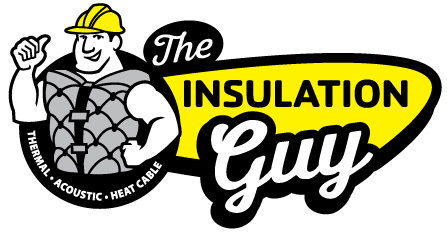How Noise Reduction Coefficient (NRC) Numbers Work
Regarding acoustic absorption coefficients, the quality of absorption is measured in "sabins." Sabins are derived by the noise reduction coefficient, or NRC. You can think of the NRC as a percentage of sound absorption per square foot—the higher the NRC rating, the better the sound absorption. The NRC realistically ranges from 0.0 to 1.0; however, it's possible for a material to rate over 1.0. This is due to an issue with testing standards and not the material absorbing sound over 100%.
How many Sabins of absorption do you need?
The best way to calculate how much sound absorption you need is to take the cubic area of the room to be treated and multiply it by .049. This will provide you with the number of sabins you need to get a one-second reverb time (this would be library quality). For buildings such as social halls, gymnasiums, industrial shops, and other areas where sound absorption isn't as important, you can half the number to get a two-second reverb time.
Example: Room size 24' x 50' x 15' high. Cubic area (length x width x height) = 18,000 cubic ft. 18,000 cubic ft x .049 is 882 sabins of sound absorption for a one-second reverb time. To get the two-second reverb time, divide the 882 by 2 to get 441 sabins. Once you have your sabin number, divide it by the noise reduction coefficient from the datasheet to get the measurement in square feet of material you'll need.
*NOTE: This is only a guideline. You can start with as little as one-half this amount of absorber, although it won't produce the same result.
*ALL ACOUSTIC ABSORBERS ARE RATED WITH A NOISE REDUCTION COEFFICIENT AND SHOULD HAVE A TEST NUMBER FROM A RECOGNIZED NATIONAL LABORATORY SUCH AS ASTM, FACTORY MUTUAL, MVSS, OR RIVERBANKS LABS
*Please also look for the flame spread and smoke development! This should also have a test number U.L. Class 1 and/or ASTM E-84. The worst thing would be to use a material that does not meet the local fire code and/or your insurance company's requirements, then later learn you might have to remove it! Such has been the case in many other instances!
Samples we have that meet the above requirements are:
-
Wall-hung fabric-wrapped baffles (any size up to 4' x 10') 1" thick, NRC rating .80
-
Vinyl-wrapped baffles (also up to 4' x 10') 1-1/2" thick with an NRC rating of .8 to .90
-
Melamine foam samples 2' x 2' or 2' x 4' Grey, blue, white or black, 1" thick, up to 4' x 8' panels, 1" thickness, NRC rating .68
If you have any questions about how much material you need or would like a firm quote on a specific quantity, or advice on how to hang the materials, please feel welcome to call or email us.





